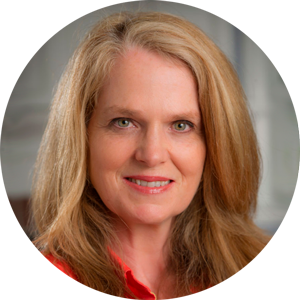Innovations in Agriculture
President's BlogIn January, I was live on the air with home economist Peggy O’Neil, the host of the radio show Food for the Future on CFPL 980. The show was part of a monthly series, Food for Thought, in which Peggy unpacks some of the “big ideas” about food and food systems to stimulate lively discussions and find the way forward together.
On the show, we discussed innovations in agriculture, a global priority to ensure there is enough food for everyone. I explained that the need for innovation is ever-present in all that we do at Burnbrae Farms, and that a combination of family values and sustainability have influenced virtually every decision throughout the years.
Peggy and I talked about goals and priorities for Burnbrae Farms, and I explained that we are an organization that genuinely cares for people, animals, and the environment, and that sustainability is an integral part of our strong agricultural heritage and our purpose. Our sustainability strategy and goal setting must be relevant to our business, hens, customers, colleagues and society. We focus our actions on five distinct areas where we believe we can make the biggest difference: Environment, Animal Care, Health and Wellbeing, Safe Nourishing Food and Community.
I felt pride in telling Peggy that in the last 50 years, we as an industry have doubled egg production while halving the carbon footprint of eggs. It was done through focus on many aspects of egg farming including housing, lighting, feed, controlling temperatures, genetics, biosecurity. It’s important for consumers to know that farmers continuously work on operations to improve conditions, maximize welfare, minimize inputs like feed and energy, and ultimately bring a quality product at the lowest price to the market.
I love speaking about what we do and the opportunity to remind consumers (in this case listeners) that farmers work with the understanding that we only have one planet and limited resources, so if we want to feed the rising population, we need to continue to innovate in agriculture so we can do more with less. Today, in Canada, less than 2% of the population farms as compared to 80 years ago when it was closer to 35-40%.
Leading innovation
Peggy asked me about the outcomes of some of our environmental initiatives over the years, including opening the largest solar-powered egg-laying farm in Canada in 2019, and opening a solar field in Lyn, Ontario, in 2021.
I explained that with our two solar powered projects, our commitment to reduce greenhouse emissions and increase the use of sustainable green energy is in full force like never before. The solar field on our home farm in Lyn generates 500 kilowatts of energy - enough to power 85 houses annually. The energy is used on the farm and in the grading station any additional power goes back to the electricity grid. The solar powered egg farm produces more power than it uses and shares power with our neighbouring farm to reduce their reliance on the grid.
At Burnbrae Farms, we have learned so much about solar power and are exploring new projects. I think it is important for companies to become early adopters of new technology, and we strive for that and continue to advance technology. We would like to see solar become more reasonably priced and available to all.
The bigger picture
I enjoyed talking to Peggy about innovations at Burnbrae Farms, where our climate target is net-zero emissions by 2050. But I also enjoyed talking about the bigger picture and how all Canadian companies can make changes to support the environment.
I explained to Peggy that we know from our work that our fleet contributes a big portion of our carbon footprint. That is something we need to solve, not just at Burnbrae Farms but as a nation. Canada is a big country with a population dispersed from coast to coast, and we move a lot of goods. Ideally, we need the government to work with us and help provide the infrastructure required for charging stations and for a clean grid.
And I left Peggy with this food for thought. We need to power electric vehicles with a clean grid. We have a lot of work to do but I’m confident if Canadians work together, it can be done. At Burnbrae Farms, we are looking to invest early and gain experience. The more organizations that are early adopters will help to drive and scale economies in production, this will drive down the price of the technology (in this case vehicles) and the delivery of charging services. We all need to work together; we all share this planet.
Stay tuned for an overview of the second segment that I recorded with Peggy.
Margaret Hudson
President and CEO, Burnbrae Farms
